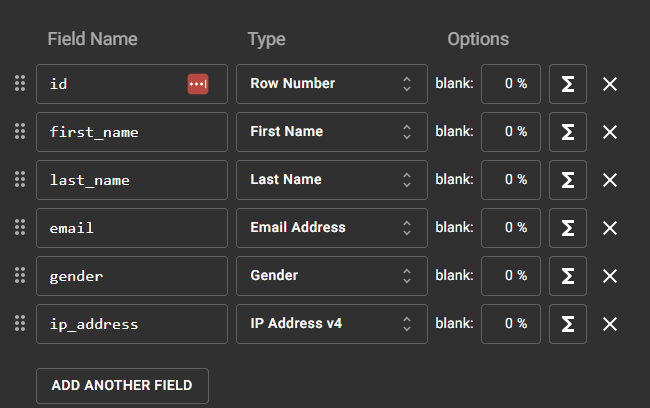
Introduction: Creating a mock dataset can be super helpful for a bunch of reasons. Whether you want to imitate real-world data you don't have access to or you want to protect sensitive or confidential information while still being able to work with realistic data, they are many reasons to create a mock dataset. I personally love building mock datasets because it feels like I am building a virtual world where pixels are replaced by rows of data.
They are plenty of ways to create a mock dataset, and the purpose of this blog is to argue that language models such as chat GPT, although impressive and incredibly useful, are not always recommended for the particular task of building mock datasets. Indeed, depending on your needs, resources, and the time you have to spend on building a mock dataset, different tools can be more pertinent.
Excel: Simple datasets can be created and modified very rapidly on Excel. The software provides a lot of flexibility when it comes to creating and manipulating data and it has built-in data analysis tools that can help you validate and clean your mock dataset. However, Excel can be time-consuming, it has size limitations in terms of the size of the dataset it can handle and it has limited features compared to other software tools designed specifically for creating mock datasets.

Mockaroo: Mockaroo is a user-friendly web-based tool that makes it easy to create mock datasets quickly. It supports a wide range of data types, including names, addresses, dates, and phone numbers, making it easy to generate realistic data and link data tables together to create complex and intricate stories and trends. However, Mockaroo is time-consuming and limits free users to 1000 rows of mock data per table.

Python: In the example below, I demonstrate how easy and fast data generation can be by generating 100,000,000 random numbers in two lines of Python code.

More generally, coding your own datasets has many advantages. Firstly, it is easy to automate the process of creating mock datasets with Python scripts. This means that you can generate new datasets on demand or on a schedule. Then, Python has a large range of libraries such as the random and faker libraries that can greatly speed up the process of data generation. Python scripts are highly customizable and can be tailored to generate the specific data that you need. Furthermore, Python is a scalable language that can handle large datasets with ease. This makes it a good choice for generating mock datasets of any size. Lastly, Python can be easily integrated with other tools and systems such as databases and APIs. This makes it easy to transfer mock datasets between different systems and tools.
Nonetheless, there are major drawdowns to using Python or other programming languages to create mock datasets. First and foremost, Python requires some technical skills and knowledge of the language. This may be a barrier for people who are not familiar with programming. Then, depending on the complexity of the mock data you want to create, it may take some time to write and test a Python script that generates the data. This can be especially true if you need to handle large datasets with intricate trends and stories. Lastly, as with any code, a Python script may require maintenance and updates to keep up with changes in your data needs or new versions of Python libraries.
In summary: Mockaroo and Excel can be better than Chat GPT for creating mock datasets in several situations:
- When you need to generate a specific type of data: Mockaroo has a wide range of pre-built data types that can be quickly customized to meet your needs. Similarly, Excel can be used to generate simple datasets with basic data types, such as numbers and strings.
- When you have limited data: If you have a small dataset or a limited amount of data to work with, Excel can be a useful tool for generating mock datasets. You can manually enter data or use formulas to create new data based on existing data.
- When you need more control over the data: Excel and Mockaroo allow you to have more control over the data you generate. You can specify the exact values or ranges for data types, and you can ensure that the data is consistent with other data sources.
- Python can also be more flexible and customizable than Chat GPT, allowing you to define your own data types and generate a large amount of data that meets your specific needs while offering the possibility to automate and integrate the process.
Overall, while Chat GPT can be a powerful tool for generating mock datasets, it may not always be the best choice depending on the specific needs of your project. If you need to generate a specific type of data quickly and easily, Excel may be a better option. If you want to create a highly customizable, reliable, or large mock dataset, using a coding language remains the most viable option. Lastly, Mockaroo is a versatile tool that offers a great alternative to the data scientist who wants to build a complex dataset but lacks the technical skills to do it with code.
